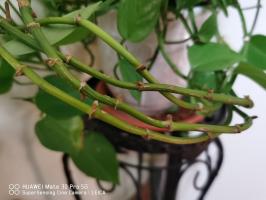How Much Fertilizer per Potted Plant?
Fertilizing your potted plants is an essential component of their growth and health. However, adding too much or too little fertilizer can both have negative impacts on your plants. So, how much fertilizer should you add to your potted plants?
Fertilizer Types and Nutrients
The amount of fertilizer you need to add to your potted plants depends on the type of fertilizer you're using and the plant's nutrient needs. There are two main types of fertilizer: organic and inorganic. Organic fertilizers are made from natural sources, such as animal manure, compost, and bone meal. Inorganic fertilizers are synthetic and include nitrogen, phosphorus, and potassium in varying amounts.
Nitrogen is essential for plant growth, as it's necessary for chlorophyll synthesis. Phosphorus encourages root growth and helps with flower and fruit development. Potassium helps plants resist disease and stress while also supporting general plant health.
Determining the Right Amount of Fertilizer
The recommended amount of fertilizer for potted plants will vary depending on the plant's size, type, and stage of growth. As a general rule of thumb, it's best to use small amounts of fertilizer frequently rather than a large amount at once. This approach will prevent the buildup of excess fertilizer salts in the soil, which can harm plant roots.
A good starting point is one-quarter to one-half of the recommended amount of fertilizer. For instance, if the fertilizer label suggests 1 tablespoon per gallon of water, start by using only 1/4 tablespoon per gallon of water. Then, monitor your plant's growth to determine if you need to increase the amount of fertilizer. If you notice your plant's growth is stunted, you may need to increase the amount of fertilizer. However, if you see an abundance of foliage and little-to-no flowers or fruit, you may be adding too much fertilizer.
When to Fertilize
In general, it's best to fertilize your potted plants during their growing season, which typically lasts from spring to fall. During the dormant season, which typically lasts from winter to early spring, you can reduce the amount of fertilizer or stop fertilizing altogether.
It's also essential to make sure that your plants are adequately watered before applying fertilizer. If the soil is dry, the fertilizer will not dissolve properly, and it may harm the plant's roots.
Conclusion
Adding the correct amount of fertilizer to your potted plants is crucial for their growth and health. By understanding your plant's nutrient needs, fertilizing appropriately, and monitoring your plant's growth, you can ensure that your potted plants thrive.

 how many times do yo...
how many times do yo... how many planted tre...
how many planted tre... how many pine trees ...
how many pine trees ... how many pecan trees...
how many pecan trees... how many plants comp...
how many plants comp... how many plants can ...
how many plants can ... how many plants and ...
how many plants and ... how many pepper plan...
how many pepper plan...





























